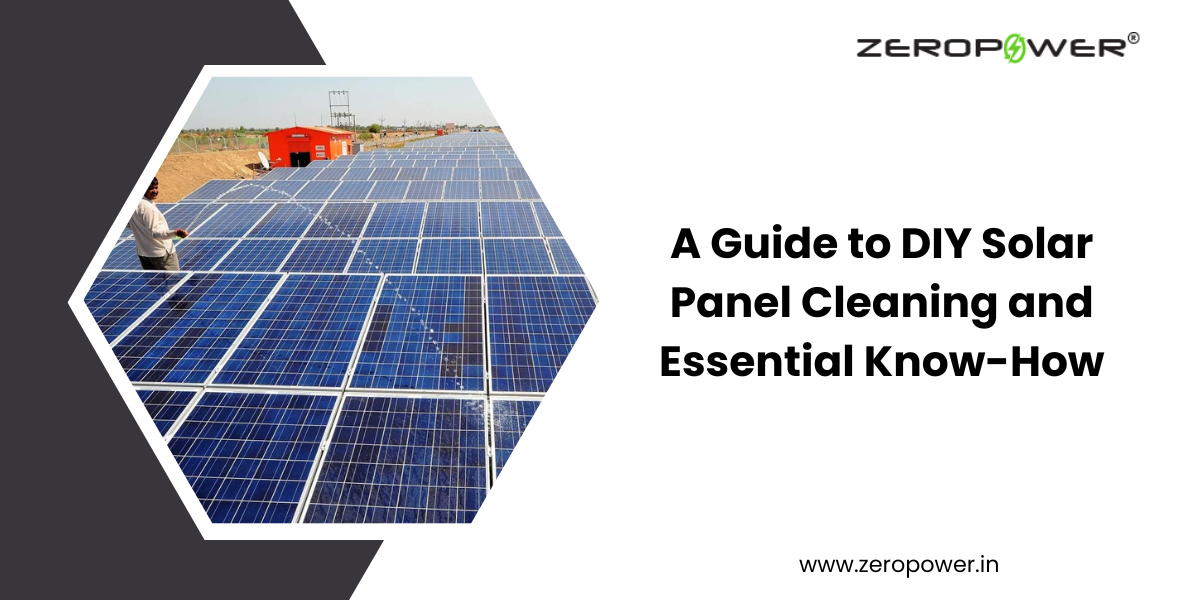Solar energy has emerged as a potent solution for sustainable power generation, and the cleanliness of solar panels is pivotal to their optimal performance. Regular maintenance ensures that your solar panels are working at peak efficiency, maximizing energy production and cost savings. With a little effort and attention to detail, you can undertake DIY solar panel cleaning and keep your energy harvest shining bright.
Why DIY Solar Panel Cleaning is Important?
Dirt, dust, pollen, bird droppings, and other debris can accumulate on the surface of your solar panels over time. This buildup can significantly diminish their efficiency, reducing the amount of sunlight they can absorb and convert into electricity. Cleaning your solar panels helps to:
Maximize Efficiency: Clean panels absorb more sunlight, leading to higher energy production and cost savings.
Longevity: Regular cleaning prevents potential damage caused by debris accumulation, extending the lifespan of your solar panels.
Return on Investment: A well-maintained solar panel system yields better returns on your initial investment.
Essential Preparations that you need to do
Before you embark on your solar panel cleaning venture, gather the necessary tools and acquaint yourself with essential precautions:
Safety First: Safety should be your top priority. Only clean panels when they are cool and not producing electricity. Turn off your solar panel system before cleaning to avoid any risk of electric shock.
Gather Your Tools: You’ll need a few basic tools: a soft brush with a long handle, a hose or bucket of water, a non-abrasive cleaning solution (like mild soap or dish detergent), and a squeegee.
Timing Matters: Opt for early morning or late afternoon hours when the panels are cooler and shadows are minimal.
Check Manufacturer Guidelines: Consult your solar panel manufacturer’s guidelines before cleaning, as some panels might have specific cleaning recommendations.
DIY Solar Panel Cleaning Steps
Step 1: Inspection: Before cleaning, inspect the panels for any damage, cracks, or loose connections. Address any maintenance issues before proceeding.
Step 2: Dusting: Gently brush off loose dirt and dust with a soft, non-abrasive brush. Start at the top of the panel and work your way down.
Step 3: Soak and Soften: Hose down the panels or use a bucket of water to wet the surface. This helps soften dirt and debris for easier removal.
Step 4: Cleaning Solution: Mix a mild cleaning solution (water and a few drops of dish detergent) in a bucket. Avoid harsh chemicals that could damage the panels.
Step 5: Gentle Scrubbing: Dip the brush in the cleaning solution and gently scrub the panels. Focus on any stubborn spots but be cautious not to apply excessive pressure.
Step 6: Rinse: Thoroughly rinse the panels with clean water to remove any soap residue. A hose with a gentle spray nozzle is ideal.
Step 7: Drying: Allow the panels to air dry or use a squeegee to gently remove excess water.
Step 8: Reconnect and Observe: Once the panels are dry, carefully reconnect your solar panel system and monitor its performance. You should notice an improvement in energy generation.
Maintenance Tips
Frequency: Cleaning every 3-6 months is generally sufficient, but adjust based on your local environment and weather conditions.
Safety: Always prioritize safety and follow manufacturer guidelines. If you’re uncomfortable with DIY cleaning, consider hiring a professional.
Minimal Pressure: Use a gentle touch when cleaning to avoid scratching or damaging the glass surface.
Temperature: Clean panels early in the morning or late in the afternoon when the panels are cooler to prevent rapid drying and streaking.
Avoid Harsh Chemicals: Stick to mild, non-abrasive cleaning solutions to protect the panel’s surface and coating.
Conclusion
Regular cleaning is an essential aspect of maintaining your solar panel system’s efficiency and longevity. With a little care and attention, you can ensure that your solar panels continue to harness the sun’s energy to its fullest potential. By embracing the DIY approach and following essential guidelines, you’re not only contributing to a cleaner environment but also maximizing the benefits of your solar investment.
